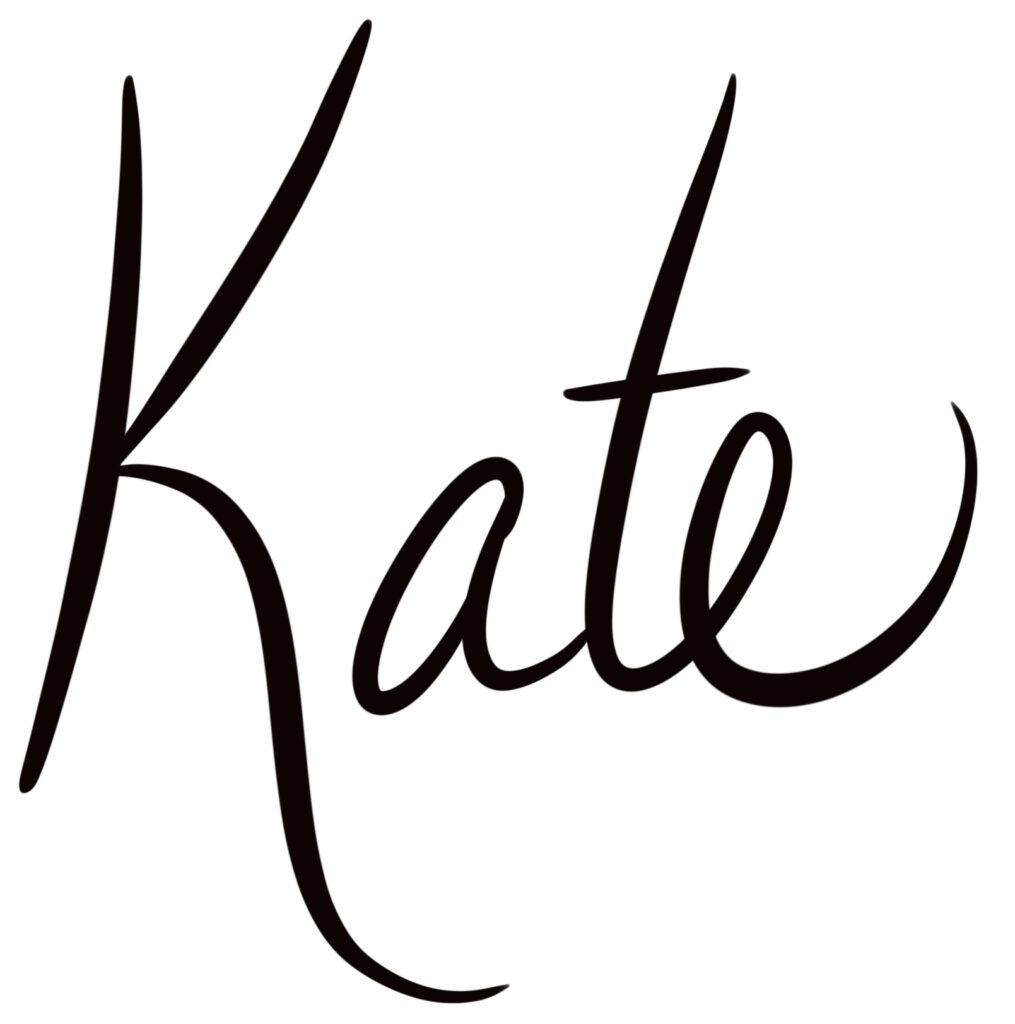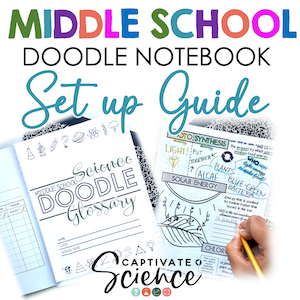
Planning to teach the phases of the moon in your middle school science class? How can moon phase doodle notes support learning in your classroom? How do they fit and what role do they play?
Moon phases are a phenomenon that kids naturally connect with. They have seen the moon change over time and often wonder what causes this predictable pattern! Read on for a full 5E lesson plan that you can use in your classroom to teach phases of the moon.
Lesson Plan Guide
- Engage / Warm-up- draw and discuss
- Explore and record data with online simulator and chart
- Explain using Doodle Notes
- Elaborate with a 2D moon phase model (paper spinner)
- Evaluate with a 3D moon phase model (mat and sphere)

Warm-up/Engage
I love to start my moon phase lessons with having kids look up their birthday moon using this moon phase calculator. Students record their answers to these questions using small doodle pictures either on a post-it note, whiteboard or in the warm-up section of their science journals.
- What did the moon look like in the sky on the night you were born?
- What will the moon look like in the sky THIS year on your birthday?
- What will the moon look like tonight in the sky?
- Look at this month’s moon calendar. What pattern does the moon shape follow as it changes?
Students pair up or work in small groups to share their answers to 1-4, with an emphasis on #4 being shared out to the whole class.
Explore
What causes the moon to change appearance? This online simulator and data chart activity gives kids a chance to start putting the pieces together on their own.
As students click and drag the moon around the Earth the data and images change. Students record data on a chart and then discuss the patterns they notice in small groups.
Access the online simulator and educator tools here.
Go right to the simulator here.
There are some great materials available with the simulator, including a multi-page student packet. I choose to create this data chart glue in for our journals instead. (free download)

Join our FREE RESOURCE LIBRARY for access to all of our Free Downloads! (Scroll down to the bottom of the post for the sign up!)

After gathering the data in their science journals, students discuss the patterns that they notice in small groups. We hold a discussion as a class so that kids can share.
What do you notice about the percentage of the moon illuminated throughout the moon cycle? What do you notice about the appearance- is there a pattern that repeats?

Another great explain teaching tool is this Moon Phase Interactive Genially. If you haven’t tried Genially yet, its a highly engaging online tool for students to explore content. You can make your own or purchase a premade tool to help your students.

Explain
Enter Moon Phase Doodle Notes! At this point students are ready to get into the notes that will support their understanding.

These notes are a visual model of the moon’s movement and how that movement causes the moon’s appearance to change. As you work through the notes, students add detail and color to show how our perspective of the moon changes throughout its orbit.

There is a PowerPoint file included with the doodle notes that gives information in small pieces for kids to add to their doodle notes: (see example slide below). My students also really like when I print a copy of the doodle notes and use my document camera! We doodle our way through the pages together talking about the information as we go.

Completing the doodle notes can take 40 minutes (or more) with my 6th graders, but they are TOTALLY WORTH IT! Check out this article about how drawing improves memory. (You can share it with your class to help students understand the benefits of doodle notes too!)
Does the moon rise and set at the same time each day? This free pdf moon spinner takes moon phase learning to a new level! http://astronomy.nmsu.edu/geas/labs/manual/lpw.pdf
I printed these spinners and had my students use them to draw the moon phases outside with chalk on a sunny day. (My rain plan was to use whiteboards.)

As the kids worked I walked around and conferenced with each small group. Students practiced visualizing the moon using the spinner and then drawing a model of the moon phase pattern. It definitely took some guidance, but many students started to see how the moon rises and sets at different times during its orbit.
Evaluate
Checking for student understanding does not always involve a quiz or exit ticket in my classroom. To evaluate student understanding of moon phases we took photos to create digital flashcards! Students were challenged to take 7 sequence photos (in order) using a 3D moon phase model tool.
Materials:
- cell phone or tablet for taking photos
- moon modeling mat printable (free download below)
- water bottle caps (1 per mat)
- ping pong balls or wood spheres and black paint or sharpie (1 per mat)
Models are a vital part of the science learning process. The NGSS clearly emphasizes how models can improve student learning. This model is a great way to access your students and their progress so far on the topic.
Have students place the ball on #1 (see free printable below) and view the moon from the perspective of Earth. Be sure to emphasize that for the model to work they will need to MOVE to put their eyes on Earth looking toward the moon. My students love an opportunity to use their phone and this proved to be a great opportunity. I had them place their phone at the Earth location and take a picture of the moon as it moved from item 1-8. The result? Digital flashcards! (The kids easily added text to their photos with the phase names.)

Set-up Tips:
Print one moon mat for each pair of students. (see below)
Water bottle cap for each pair of students (keeps ball from rolling away)
Moon Sphere Suggestions:
In the picture I colored 1/2 of a ping-pong ball with permanent marker (acrylic paint will probably work better!) and then did a clear coat over the ping pong ball with a clear acrylic sealer. Full disclosure….This worked for one year but the black started to scratch off. SO….I found these 1 1/2 inch wood spheres and I plan to paint them 1/2 white and black. I’m pretty confident they will work a lot better 🙂
Note: I think it is a good idea to take the time to talk about the model and what it does well and what it is lacking (scale, light source etc.) When kids understand the benefits and drawbacks of models they can better apply them to their understandings!
Walking around and checking each group’s photos gave me a good sense of who understood and who still needed more practice. The 5E approach took a few class days but I was impressed with how my students progressed!
Teaching the moon phases can be a lot of fun. I hope you gathered some strategies that you can apply right away in your science classroom! To access the free moon phase data chart be sure to sign up for our free resource library!
Kate
Be sure to follow @captivatescience on IG for more tips and doodle note lessons.



